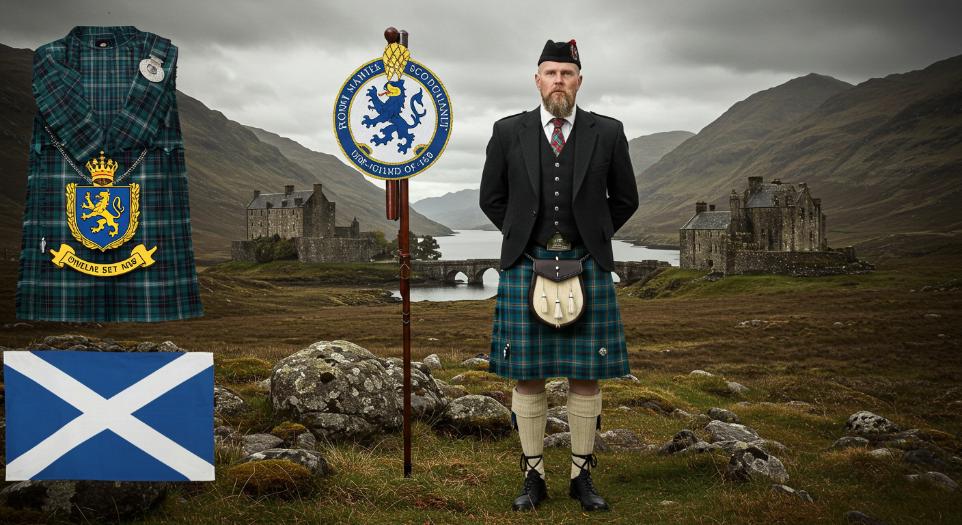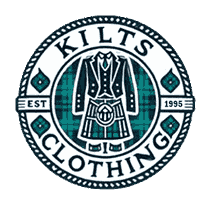Why Do Scottish Men Wear Kilts? A Complete Guide

The kilt is one of the most recognizable symbols of Scottish heritage, often associated with Highland warriors, clan traditions, and national pride. Over the centuries, it has evolved from a practical garment to a cultural icon worn on special occasions and daily life. But why do Scottish men wear kilts? This guide explores the history, significance, and modern relevance of this unique piece of Scottish Kilt clothing.
The Origins of the Scottish Kilt
The history of the Scottish kilt dates back to the 16th century when Highlanders wore a full-length garment called the Great Kilt (Feileadh Mòr). This early version consisted of a long fabric draped over the shoulder and secured with a belt. It provided both clothing and protection against the harsh Scottish weather. Over time, the kilt evolved into the knee-length version we see today, known as the Small Kilt (Feileadh Beag), which emerged in the 18th century.
The transformation of the kilt was primarily influenced by practicality. The Great Kilt, while useful for protection, was cumbersome. The shorter version allowed for more mobility, making it easier for men to engage in work and battle. By the time of the Jacobite uprisings in the 18th century, kilts had become a key symbol of Scottish Highland identity.
Cultural and Historical Significance
Kilts have long been associated with Scottish clans. Each clan had its tartan pattern, serving as a form of identification. These unique patterns helped establish a sense of belonging and unity among clan members.
During the Jacobite risings, the British government saw kilts as a representation of rebellion and sought to suppress Highland culture. In 1746, the Dress Act was introduced, banning the wearing of kilts and other traditional Highland attire. This law remained in place for nearly four decades before being repealed in 1782. Once the ban was lifted, kilts regained their status as an emblem of Scottish heritage and pride.
Why Kilts Are Still Worn Today
Despite the passing of centuries, kilts continue to be worn with honor and pride. There are several reasons why they remain relevant today:
- Traditional and ceremonial occasions – Kilts are commonly worn at weddings, Highland games, and other cultural festivals. Many Scots wear kilts during important life events as a nod to their heritage.
- Military and regimental use – Some Scottish military units still incorporate kilts into their dress uniforms, reinforcing their historical significance.
- Fashion and everyday wear – While traditional kilts remain popular, modern variations have entered casual fashion, appealing to a broader audience.
What Does Wearing a Kilt Represent?
Wearing a kilt is more than just a fashion choice; it represents a connection to Scotland's history, culture, and traditions. It symbolizes respect for one's ancestry and the struggles of those who fought to preserve their identity. The tartan design of a kilt often signifies a particular family or clan, adding personal significance to the garment.
For many Scots, donning a kilt is an expression of national pride. Whether worn for a formal event or as part of everyday attire, the kilt reminds of Scotland's rich heritage.
Common Myths and Misconceptions About Kilts
Several myths surround kilts, many of which have been exaggerated over time. Let's address some of the most common misconceptions:
- Only Scots can wear kilts – While kilts are a Scottish tradition, they are not exclusive to Scots. Many people from different backgrounds wear kilts to celebrate Scottish culture.
- Men wear nothing under the kilt – This is perhaps the most popular myth about kilts. While some choose to follow this tradition, it is not a requirement. Most men wear appropriate undergarments depending on the occasion.
- Kilts are only for formal events – While kilts are commonly seen at weddings and special occasions, they are also worn casually. Many modern kilts are designed for everyday wear and was manufacture in many of the Scottish kilt company.
How to Wear a Kilt Properly
Understanding how to style it is essential for those new to wearing a kilt. Here are some key components of a complete kilt outfit:
- The kilt – The main garment, traditionally made of wool with pleats at the back.
- Sporran – A small pouch worn at the front, as kilts do not have pockets.
- Belt and buckle – Used to secure the kilt.
- Jacket and waistcoat – Optional additions for formal occasions.
- Kilt hose and flashes – Knee-high socks and decorative garters.
- Ghillie brogues – Traditional Scottish shoes with long laces.
Wearing a kilt properly ensures that it maintains its historical and cultural significance while also looking stylish.
The Kilt in Modern Times
Kilts have transcended their origins and are now embraced in various ways. Beyond Scotland, those who appreciate their aesthetic and comfort wear kilts in parades and sports events.
Additionally, kilts have influenced global fashion, with designers incorporating tartan patterns into their collections. Utility kilts, which feature pockets and modern materials, have also gained popularity among those who want to wear kilts in everyday settings.
Conclusion
The kilt remains an enduring symbol of Scotland's cultural heritage, representing pride, history, and identity. From its practical beginnings in the Highlands to its role in modern fashion and formal events, the kilt has proven to be more than just a piece of clothing. The kilt is unique in Scottish culture, whether worn for tradition, celebration, or personal expression.
For anyone interested in embracing Scottish heritage, wearing a kilt is a powerful way to connect with history while making a bold fashion statement.


